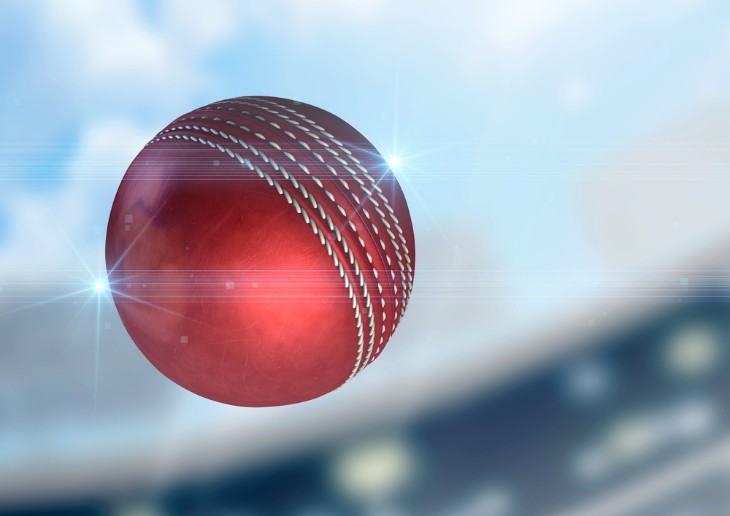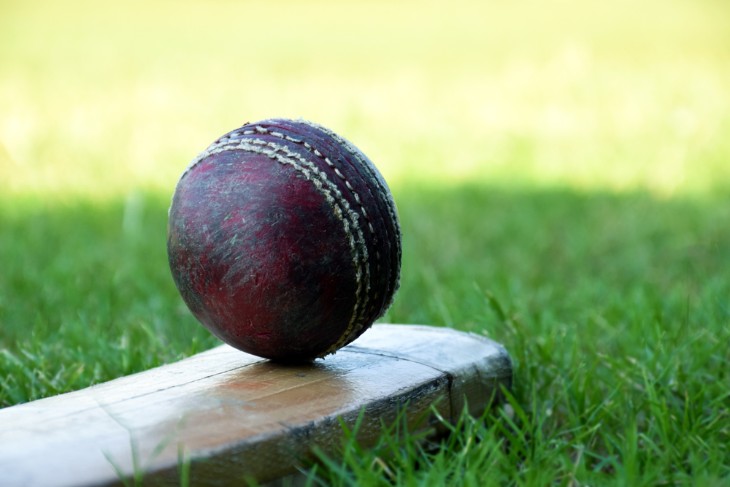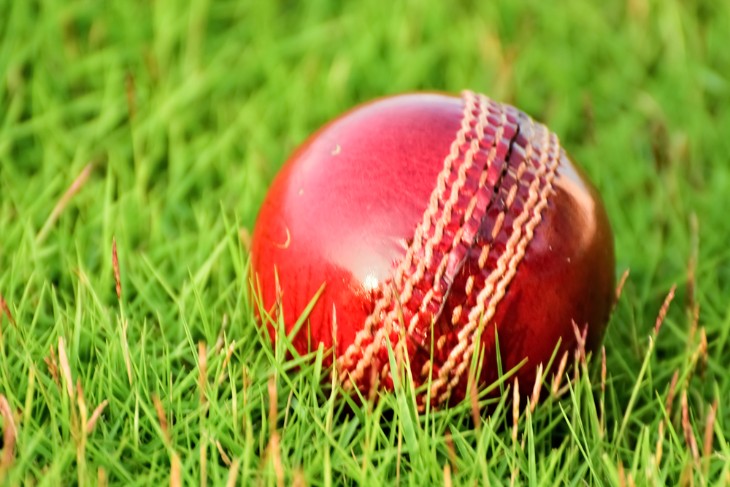Cricket is a game full of tradition and careful rules. One such important element is the weight of the cricket ball. This may seem like a small detail, but it has a significant impact on the dynamics of the game. In this article, we will discuss in detail the weight of the cricket ball, its standards, variations, and the profound impact it has on the art of bowling and the skill of batting. Let's explore the important matter that adds complexity and depth to the gentlemanly game of cricket.
Cricket Ball: Weigh and Size
According to the Laws of Cricket published by the Marylebone Cricket Club, custodians of the laws since its formation in 1787, the weight and size of the ball used in men's cricket must comply with defined specifications.
Weight: The ball must weigh at least 5 1/2 ounces or 155.9 grams, to ensure a consistent standard for play. At the upper limit, the ball must not weigh more than 5 3/4 ounces or 163 grams.
Circumference: The circumference of the ball plays an important role in its behavior. Offering standard sizes, the ball must have a circumference of at least 8 13/16 inches or 22.4 centimeters. To maintain uniformity in the game, it should not exceed 9 inches or 22.9 centimeters.
Men’s, Women’s, and Youth Cricket Balls
Weight and Dimensions of a Ball in Women’s Cricket
A new ball to be used in a women's cricket match must have a minimum weight of 4 15/16 ounces or 140 grams. This standardized weight ensures that the ball meets the required specifications for play. The maximum allowable weight for the ball is 5 5/16 ounces or 151 grams.
Circumference: The ball's circumference is another critical aspect. It must measure at least 8 1/4 inches or 21.0 centimeters. The specified size of the ball's circumference is important in determining its behavior during matches. The upper limit for the circumference is 8 7/8 inches or 22.5 centimeters.

History of Cricket Ball Weigh
The weight of the cricket ball, which may seem like a small thing, has a rich history associated with the evolution of the game. Cricket is believed to have originated in the 16th-century, but its rules and equipment have undergone many changes and improvements over the years.
In the early days of cricket, the weight of the ball was not as strictly controlled as it is today. Different regions and clubs had their own variations, resulting in a range of ball weights being used. As the game gained popularity and formal rules emerged, a need for standardization was felt.
It was the Marylebone Cricket Club (MCC), the guardian of the laws of cricket, which introduced precise rules regarding the weight of the cricket ball. These 18th-century rules specified that the cricket ball should weigh between 5 1/2 ounces and 5 3/4 ounces. These standards have stood the test of time and remain a fundamental part of the laws of cricket.
Standardized ball weight ensures fairness and consistency in the game, and it plays an important role in the strategies adopted by bowlers and batsmen. Today, the weight of the cricket ball remains a cornerstone of the game, reflecting cricket's commitment to tradition and carefully crafted rules developed over centuries.
Materials and Specifications
The cricket balls are carefully crafted, and their materials and specifications follow British Standard BS 5993, which regulates their construction and dimensions. The quality and performance of cricket balls must conform to these stringent standards.
The materials used in the manufacture of a cricket ball consist of three distinct components:
Cork core: The core of a cricket ball is usually made of cork. Cork provides the desired weight and flexibility, giving the ball bounce and allowing it to behave as required in play.
String wrapping: To strengthen the cork core, several layers of string are tightly wrapped around it. This string wrapping increases the structure and durability of the ball, making it able to withstand the rigors of the game.
Leather cover: The outer layer of the cricket ball is made of leather. This leather covering not only provides a distinctive look to the ball but also affects its performance. The choice of leather color varies depending on the format of the game: white leather for T20 or ODI matches and red leather for Test and first-class matches.
The number of pieces used to make a leather cover depends on the level of the game being played:
Two-piece casing: In practice or lower-level games, two pieces of leather are used to surround the cork and string. Imagine cutting an orange into two parts; Each piece of leather covering looks like one of these parts.
Four-piece cover: For high-quality games such as Test matches, four pieces of leather are used to cover the ball. These four pieces, when stitched together, form a symmetrical and consistent cover.
To hold the leather covering together, a series of stitched seams are used, with the central seam slightly raised. This seam looks like an equator around the ball. Typically, six rows of stitches mark the "equator", ensuring a secure and durable construction.
Constructed from cork, string, and leather, these carefully crafted cricket balls are not only a fundamental aspect of the game but also a reflection of the game's commitment to precision and tradition.
Cricket Ball Weight Rules
In the world of cricket, accuracy is everything, even the weight of the cricket ball. The rules governing cricket balls are outlined in Rule 5, and are as meticulous as they come. Here, we are explaining the major rules that make the cricket ball an essential part of the game.
Rule 1: Weight and dimensions
The weight and dimensions of the ball are standardized. For men's cricket, the ball should weigh between 5 1/2 ounces and 5 3/4 ounces. These features ensure consistency and predictability in the game.
Rule 2: Approval and Control
Before the match begins, the captains and umpires must clear the ball for use. The umpire maintains possession of the ball before the toss and must maintain control of the ball throughout the game. Whenever play is stopped, the umpire takes possession of the ball.

Rule 3: Right to the new ball
The captain has the right to demand the use of a new ball before the start of the innings. However, exceptions to this right may be made if agreed by the captains and umpires before the match.
Rule 4: Substitution in long matches
In matches lasting more than a day, the captain may request a new ball after a prescribed number of overs have been bowled with the old ball. The specific number of overs may vary but must be 75 overs or more. The umpire informs the scorer and the batsmen when the new ball arrives.
Rule 5: Replacing old or lost balls
If the old ball is lost or is not recoverable the umpires have the right to replace the old ball with a ball of comparable wear and tear. They can also replace a ball if it becomes unfit for use. The batsmen and fielding captain are informed when the ball is changed.
Rule 6: Ball specifications for other formats
Rule 6 defines ball specifications for cricket formats other than men's cricket, such as women's cricket and children under 13.
The ball rules of cricket may seem extensive, but they are the essence of the accuracy, and fairness of the game. Each rule ensures that the ball is more than just an accessory; It is a vital component that sets the stage for every delivery, wicket and boundary in this game.
The Ball Weigh an Impact on Bowling and Batting
The weight of the ball is an important factor that affects the balance of power between the bat and the ball during a match. This is a constant consideration for captains and players when choosing the ball for a match. Whether it is about taking advantage of swing or making life difficult for the batsman, the weight of the ball shapes the strategies adopted by both teams, making it a central element in the tactics of every cricket match.
For bowlers, the weight of the ball affects their ability to generate pace, swing, and seam movement. A heavier ball may be bowled at greater speed, potentially making it harder for the batsman to react in time. Additionally, weight affects the amount of swing and seam achieved by the bowler. The heavier ball generally swings less but can seam more. Conversely, a lighter ball can be bowled more efficiently, providing more control and potentially more swing.
It can be a challenging task for the batsmen to face the heavy ball. The extra weight means the ball comes off the pitch with greater velocity, giving the batsman less time to react. A heavier ball may also produce more bounce, making it difficult to judge. On the other hand, a lighter ball may be easier to handle, allowing batsmen to play with more confidence.
Bottom Line:
A seemingly insignificant detail, the weight of a cricket ball carries immense significance in the sport. Whether it's the precision of bowlers or the confidence of batsmen, this weighty factor underpins the game's dynamics. For men's cricket, the ball must weigh between 5 1/2 ounces and 5 3/4 ounces, meticulously regulated to ensure fairness and consistency. In women's cricket, the specifications are slightly different, reflecting the unique requirements of the format. These weight standards represent the sport's commitment to tradition, precision, and fair play, making the cricket ball much more than just a sphere in play.
For more information:


